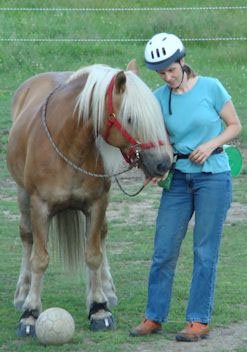Myth #1: Animals can be “made” to change a behavior.
I have asked animals to change their behavior and they have responded promptly and generously. When that has happened I always heard their side first and offered alternatives, compromises or explanations. Telepathic communication can be useful in helping both sides understand one another, but animals ultimately decide for themselves when it comes to behavior. (Their instincts and natural inclinations also make certain behaviors more challenging for them.)
Idea: Help them visualize the new behavior.If you want your animal to change a behavior, then help them see what you want. Close your eyes and visualize your animal in their daily routine (omit the negative behaviors). As they sleep, eat, play, and interact with others send the feeling (emotion) of happiness and peace. Then visualize the specific behavior that you want them to perform (using the litter box, scratching their post, or sitting quietly when guests arrive). Do this exercise everyday for two weeks.
Fuzzy Bunny: Clyde chews the couch.Not all behaviors can be changed. I have visualized good behavior in the living room to my rabbit Clyde many times, but his instinct is to dig and chew. In the case of natural behaviors, sometimes it is the human who needs to change their expectations rather than the animal. We understand that bunnies explore their environment by chewing and digging, so we made one room bunny safe; that is where he spends his days and nights. When we are available to watch him and play with him he can be in the living room.
Myth #2: Animals need an animal communicator to help them talk to each other.All beings, animals and humans included, are capable of speaking telepathically to one another. Some humans don’t use the ability or even believe in it. Other animals have no reason to talk to one another. Most domestic animals do communicate with each other; this doesn’t mean that they will be friends. I have talked to animals in households that were not getting along and helped them resolve their differences. My assistance was in the form of therapy, not translations, because the animals were already capable of understanding each other.
Idea: Realize the intensity of living with another species 24 hours a day in a small house.We ask animals to set aside their natural relationships and live together harmoniously. They often rarely leave the house and have to share the affection of their person. For some animals this is easy, for others it can be a real challenge. To help your animal friends get along it is important to discuss new members before you bring them home. It is also helpful to demonstrate relationships- if you want peace then be peaceful. Again, you can visualize the behaviors you would like to see. Finally, be sure each animal is getting what they need in terms of food, love, litter boxes, and exercise.
Fuzzy Bunny: Clyde and the cats are constantly working out their relationship issues.We (the humans) do what we can to help our rabbit and cats get along. Sometimes the best thing to do is to let go and understand that the humans are not the center of the universe (surprising isn’t it?!) The cats both like to “bat the bunny”; they lift their paw and hold it suspended for a moment in front of Clyde- then they lightly smack him. Clyde flees, then turns and runs straight at the cat. Sometimes it is a game, and sometimes they get in a bit of an argument. No one ever gets hurt and we all continue to work on understanding one other.
Myth #4: An animal communicator can diagnose an illness.When I talk with animals they tell me how they are feeling physically; sometimes in detail. I can relay this information to their people or vet, but this does not give me knowledge of their specific medical condition. Practice over the years makes it is possible to become familiar with the symptoms of certain illnesses, but this does not make me a vet- the animals should be treated by professionals.
Idea: Health issues are often felt internally before physical symptoms are visible to the animal’s person.If you notice your animal behaving differently, she may not be feeling well. Also, there are different types of veterinary medicine- you might consider acupuncture or homeopathy for some illnesses.
Fuzzy Bunny: Clyde became healthy with the help of a team of vets.
When we first got Clyde he was very sick. After his recovery from surgery Clyde would sleep too long and too deep. My homeopathic vet treated him and he became much more alert and happy. Then I took him in for acupuncture and chiropractic work and he really felt better! He became very alert and physically comfortable. By talking with him I knew he wasn’t feeling 100% and he could tell me what was bothering him, so it was very rewarding to find a way to help him feel good.
Myth #5: You need an animal communicator to help you tell your animal about a life change.
Animal Communicators appreciate your business of course, but everyone is capable of sending clear messages to animals.
Idea: Send your animal pictures and feelings about the next upcoming change.If you are going on vacation, moving, or preparing your pet for surgery, then you can visualize and describe the feelings to them and they will understand. Try to be quiet and listen for their message to you about what they will need.
Fuzzy Bunny: I told Clyde about his upcoming visit to the chiropractor.Even though Clyde was given an idea about what was going to happen, he was hesitant to get into the carrier. Once he was there, however, he relaxed quickly when he saw that I was accurate in my description of the upcoming visit.
























